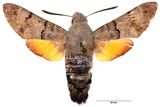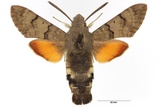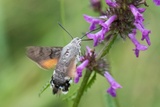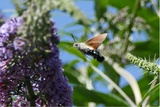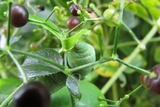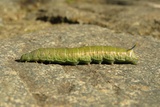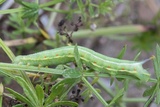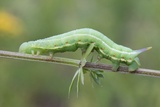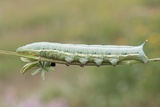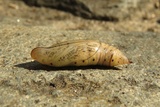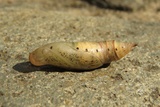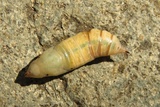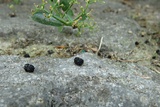Macroglossum stellatarum (Linnaeus, 1758) Species
Last modified: Oct. 18, 2025, 4:13 p.m.
A very common migrant in Belgium.
The species is able to hibernate as an adult during mild winters.
Details
- Classification
- Family: Sphingidae > Subfamily: Macroglossinae > Tribus: Macroglossini > Genus: Macroglossum > Species: Macroglossum stellatarum
- Vernacular names
- Kolibrievlinder (NL), Hummingbird Hawkmoth (EN), Le Moro-Sphinx, Le Sphinx du Caille-Lait (FR), Taubenschwänzchen (DE)
- First mention in Belgium
- De Sélys-Longchamps E. 1837. Catalogue des Lépidoptères ou Papillons de la Belgique, précédé du tableau des Libellulines de ce pays. — — : 1–29. On page 22 (as Macroglossa Stellatarum). view page
- Status
-
Migrant In Belgium since July 1837.
A very common migrant in Belgium, and present every year, occasionally in large numbers.
Distribution
Bionomics
Eggs are laid singly on the underside of the leaves and flowers of the host plant—pupation in a flimsy cocoon near the soil among foliage or leaf litter.
Adult moths visit flowers of a.o. Lonicera spp., Phlox spp. and Saponaria spp. They are active during the day and used to 'sunbathe' in front of warm walls or rocks while flying. During mild winters the species can hibernate as an adult in sheltered places like outbuildings, crevices, and holes in walls and trees and it will probably become a breeding resident in small numbers shortly.
It comes occasionally to light.
Flight periods
The adults have been observed from February till November, but most specimens are usually seen from May till September.
